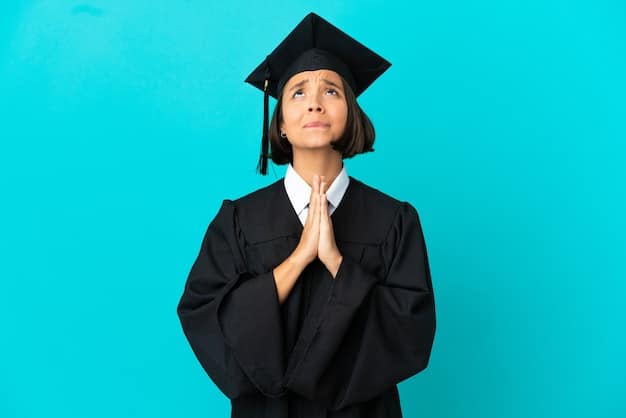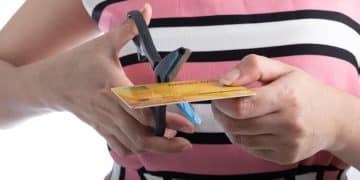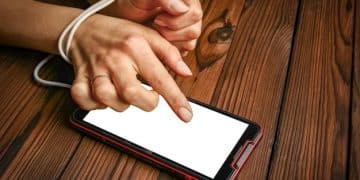Federal Student Loan Forgiveness: A Complete Guide to Eligibility & Application

Federal student loan forgiveness programs offer eligible borrowers a pathway to have their remaining student loan balance canceled after meeting specific requirements, such as working in public service or teaching in a low-income area.
Navigating the world of student loans can be overwhelming, especially when you’re burdened with significant debt. Fortunately, the U.S. government offers several federal student loan forgiveness programs designed to help borrowers manage their debt and achieve financial freedom. This comprehensive guide will walk you through various forgiveness options, eligibility requirements, and the application process.
Understanding Federal Student Loan Forgiveness Programs
Federal student loan forgiveness programs provide a lifeline for borrowers struggling to repay their student loans. These programs offer the possibility of having your remaining loan balance canceled after meeting specific requirements. Understanding these programs is crucial for anyone with federal student loans.
What is Federal Student Loan Forgiveness?
Federal student loan forgiveness is a government initiative that cancels all or part of a borrower’s outstanding federal student loan debt. The goal is to alleviate financial burdens and encourage individuals to pursue careers in public service or other high-need fields.
Types of Federal Student Loan Forgiveness Programs
There are several types of federal student loan forgiveness programs, each with its own set of eligibility requirements. Some of the most popular programs include:
- Public Service Loan Forgiveness (PSLF)
- Teacher Loan Forgiveness
- Income-Driven Repayment (IDR) Forgiveness
Each program caters to different career paths and financial situations, offering tailored solutions for student loan debt relief.
Federal student loan forgiveness programs are diverse, offering various paths for eligible borrowers to reduce or eliminate their student debt. Knowing the differences between these programs is the first step toward finding the right solution for your financial situation.
Public Service Loan Forgiveness (PSLF)
The Public Service Loan Forgiveness (PSLF) program is designed for individuals working in public service. If you’re employed by a government organization or a qualifying non-profit, this program could significantly reduce your student loan debt.
Eligibility Criteria for PSLF
To qualify for PSLF, you must meet several requirements, including:
- Working full-time for a qualifying employer
- Having Direct Loans (or consolidating other federal student loans into a Direct Consolidation Loan)
- Making 120 qualifying monthly payments under a qualifying repayment plan
Qualifying Employers
Qualifying employers for PSLF include:
- Government organizations at any level (federal, state, local, or tribal)
- 501(c)(3) non-profit organizations
- Other non-profit organizations that provide certain public services

It’s essential to verify that your employer qualifies for PSLF before pursuing this option.
How to Apply for PSLF
The PSLF application process involves several steps:
- Submit an Employment Certification Form (ECF) annually or when you change employers to ensure your employment qualifies.
- Consolidate non-Direct Loans into a Direct Consolidation Loan, if necessary.
- Make 120 qualifying monthly payments.
- Submit the PSLF application after making your 120th qualifying payment.
The PSLF program offers a substantial benefit to those committed to public service, forgiving remaining loan balances after a decade of qualifying payments and employment.
Teacher Loan Forgiveness Program
The Teacher Loan Forgiveness program aims to encourage qualified teachers to serve in low-income schools. This program can forgive up to \$17,500 of your federal student loans.
Eligibility for Teacher Loan Forgiveness
To be eligible for Teacher Loan Forgiveness, you must:
- Teach full-time for five complete and consecutive academic years in a low-income school or educational service agency.
- Have eligible federal student loans, such as Direct Loans or Federal Stafford Loans.
- Meet certain qualifications, such as being a highly qualified teacher.
Qualifying Schools and Educational Service Agencies
A qualifying school or educational service agency is one that:
- Is listed in the Department of Education’s Annual Directory of Designated Low-Income Schools for the relevant academic years.
Loan Forgiveness Amounts
The amount of loan forgiveness you can receive depends on the subject you teach:
- Highly qualified mathematics, science, or special education teachers can receive up to \$17,500 in forgiveness.
- Other qualified teachers can receive up to $5,000 in forgiveness.

The Teacher Loan Forgiveness program provides significant financial relief to educators dedicated to serving students in underserved communities, helping them manage their student loan debt while making a difference in education.
Income-Driven Repayment (IDR) Forgiveness
Income-Driven Repayment (IDR) plans offer loan forgiveness after a certain number of years, depending on the plan. These plans are designed to make your monthly loan payments more affordable based on your income and family size.
Types of IDR Plans
There are several types of IDR plans, including:
- Income-Based Repayment (IBR)
- Pay As You Earn (PAYE)
- Revised Pay As You Earn (REPAYE)
- Income-Contingent Repayment (ICR)
Forgiveness Timelines
Each IDR plan has a different forgiveness timeline:
- IBR: Forgives remaining balance after 20 or 25 years, depending on when you received your loans.
- PAYE: Forgives remaining balance after 20 years.
- REPAYE: Forgives remaining balance after 20 years for undergraduate loans and 25 years for graduate loans.
- ICR: Forgives remaining balance after 25 years.
Eligibility and Application for IDR Plans
To enroll in an IDR plan, you must demonstrate a financial need. The application process typically involves providing income and family size information. You can apply through the Department of Education’s website.
IDR plans offer a safety net for borrowers with low incomes, providing manageable monthly payments and the potential for loan forgiveness after a set period. This can be a game-changer for those struggling to keep up with their student loan obligations.
Other Federal Student Loan Forgiveness Options
Besides PSLF, Teacher Loan Forgiveness, and IDR forgiveness, there are other federal student loan forgiveness options available. These programs cater to specific circumstances and career paths.
Closed School Discharge
If your school closes while you’re enrolled or shortly after you withdraw, you may be eligible for a Closed School Discharge. This program cancels your federal student loans if you meet certain requirements.
Borrower Defense to Repayment
If your school misled you or engaged in misconduct, you may be eligible for Borrower Defense to Repayment. This program allows you to seek loan forgiveness if your school violated certain laws or regulations.
Total and Permanent Disability Discharge
If you become totally and permanently disabled, you may be eligible for a Total and Permanent Disability (TPD) Discharge. This program cancels your federal student loans if you meet the disability requirements.
Exploring all available federal student loan forgiveness options is essential to find the best fit for your unique situation. These programs provide pathways to debt relief for borrowers facing various challenges.
Navigating the Application Process
Applying for federal student loan forgiveness can be complex, but understanding the process can increase your chances of success. Knowing the required documents, deadlines, and potential pitfalls is critical.
Gathering Required Documents
Before you start the application process, gather all necessary documents, including:
- Loan account statements
- Proof of employment (for PSLF)
- Tax returns
- Income verification
Submitting Your Application
Follow the application instructions carefully and submit all required documents. Ensure that your application is complete and accurate to avoid delays or denials.
Common Mistakes to Avoid
Some common mistakes to avoid during the application process include:
- Missing deadlines
- Providing inaccurate information
- Failing to recertify your income annually (for IDR plans)
Navigating the application process requires attention to detail and adherence to guidelines. By gathering the necessary documents and avoiding common mistakes, you can increase your chances of approval and access the debt relief you deserve.
| Key Point | Brief Description |
|---|---|
| 🤝 PSLF | Forgives loans for public service employees after 120 qualifying payments. |
| 🍎 Teacher Loan Forgiveness | Offers up to $17,500 forgiveness for teachers in low-income schools. |
| 💰 IDR Forgiveness | Forgives loans after 20-25 years on income-driven repayment plans. |
| 🏫 Closed School Discharge | Discharges loans if your school closes while enrolled or soon after. |
Frequently Asked Questions (FAQ)
▼
PSLF forgives the remaining balance on your Direct Loans after you’ve made 120 qualifying monthly payments while working full-time for a qualifying employer, such as a government or non-profit organization.
▼
Qualifying employers include government organizations at any level (federal, state, local, or tribal) and 501(c)(3) non-profit organizations, as well as other non-profit organizations that provide certain public services.
▼
IDR plans adjust your monthly loan payments based on your income and family size. After a set period (20-25 years), the remaining balance is forgiven. Common IDR plans include IBR, PAYE, and REPAYE.
▼
Yes, if your school closes while you’re enrolled or shortly after you withdraw, you may be eligible for a Closed School Discharge. This program cancels your federal student loans if you meet the requirements.
▼
If your school misled you or engaged in misconduct, you may be eligible for Borrower Defense to Repayment. This program allows you to seek loan forgiveness if the school violated certain laws or regulations.
Conclusion
Understanding and navigating federal student loan forgiveness programs can provide significant financial relief for eligible borrowers. By exploring your options, meeting the eligibility requirements, and carefully following the application process, you can take control of your student loan debt and work towards a brighter financial future.





